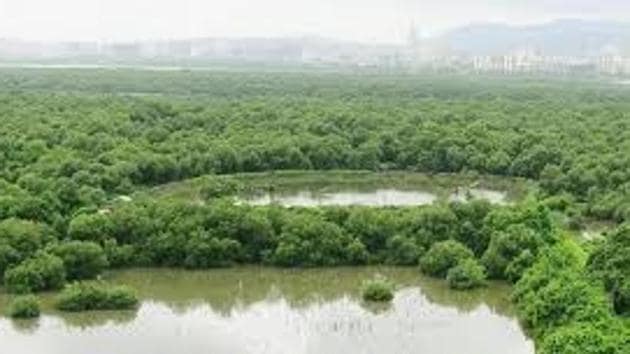Citizens, NGOs fighting to save mangroves, wetlands across Mumbai
With land mafia eyeing mangroves and wetlands across Mumbai, citizens, NGOs, state machinery as well as courts are focusing on conserving these green spaces in the financial capital of the country. According to non-profit Mangrove Society of India (MSI), intertidal regions are in high demand as they can be potential hotspots for construction and infrastructure development.
With land mafia eyeing mangroves and wetlands across Mumbai, citizens, NGOs, state machinery as well as courts are focusing on conserving these green spaces in the financial capital of the country.

According to non-profit Mangrove Society of India (MSI), intertidal regions are in high demand as they can be potential hotspots for construction and infrastructure development.
HT has been consistently reporting and breaking stories related to mangrove and wetland destruction over the past year, with major cases and conservation-related developments over the past month. “A battle is underway in Mumbai,” said Arvind Untawale, executive secretary, MSI. “Citizens, NGOs and state government bodies are on one side against the space-starved builder lobby eyeing mangrove and wetland patches, some of the last remaining open areas that protect the city from flooding. Many cases in private areas, especially involving the builder lobby, have gone undetected where structures such as housing complexes, apartments and several private projects are currently built. With increasing awareness, citizens have forced the state machinery to act against them, and we are currently witnessing a contest between development and conservation.”
Mangrove trees are salt-tolerant plants that help absorb pollutants and reduce chances of inundation. Wetlands comprise creeks, estuaries, marshes, riverbanks, seashores, backwaters, coral reefs, which mangroves are a part of. Destroying these areas is an offence as per the law.
N Vasudevan, additional principal chief conservator of forest, state mangrove cell, a government body formed in 2012 to protect mangroves and wetlands across Maharashtra, said, “Citizens or the media report every case of mangrove destruction, almost on a daily basis. As far as development works are concerned, the law is stringent. The government is proactively taking up protection in this area, which has resulted in a 16 sqkm increase in mangrove cover in Mumbai. Some major development projects will definitely require mangrove areas and wetland patches, but it is a small price to pay. Compensatory afforestation and mitigation measures will be carried out in such cases. However, it is our mandate to ensure none of them are done illegally.”
City-based activists don’t agree. “It is not sustainable development. Instead of restoring and conserving protected areas, they are being given away at the smallest pretext. Despite having options, destruction continues unabated. Every project is possible if equal amount is spent on conservation,” said Stalin D, director, NGO Vanashakti. “The developer lobby is too strong for the mangrove cell or the chief minister to ignore.”
Debi Goenka, executive trustee of the environment group Conservation Action Trust, said the state needs to do more. “Favouring developers suits them (state). It is a vicious cycle where all government bodies are happy to capitalise on the slow well-planned mangrove destruction,” he said.
Goenka cited destruction cases reported in the media such as at the Indian Navy station at Hamla, Marwe, where only the private contractor was booked, and the district administration refused to take action against the Navy; the Mumbai Metropolitan Regional Development Authority (MMRDA) destroying mangroves along Mithi River for Metro and Mumbai trans-harbour link; City Industrial Development Corporation (CIDCO) destroying mangroves for the Navi Mumbai airport or the municipal corporation cutting off tidal flow to mangroves for the Brihanmumbai Stormwater Disposal System.
“The mangrove cell is aware of all these violations but sits on them. It is a long-term systematic process to destroy trees by stopping the seawater from spreading. Once the trees die, a slum colony is set up. Following this, a developer approaches the slum rehabilitation authority (SRA) to construct a building and with zero floor space index (FSI), a four-storey building is ready,” he said.
“While the media is doing a great job, Mumbaiites can’t do anything apart from filing complaints. The system does not allow us to do it. On-ground implementation is hogwash,” said Valentine Vaz, Malad resident.

Stay updated with all the Breaking News and Latest News from Mumbai. Click here for comprehensive coverage of top Cities including Bengaluru, Delhi, Hyderabad, and more across India along with Stay informed on the latest happenings in World News.
Stay updated with all the Breaking News and Latest News from Mumbai. Click here for comprehensive coverage of top Cities including Bengaluru, Delhi, Hyderabad, and more across India along with Stay informed on the latest happenings in World News.





